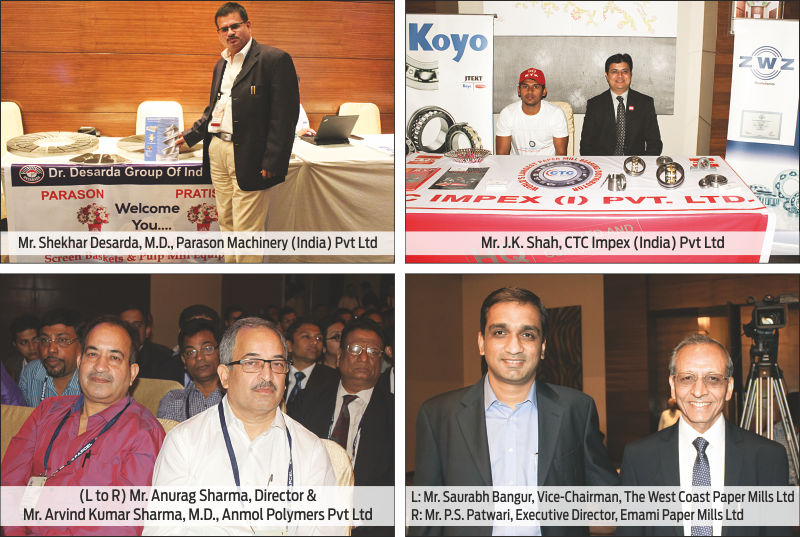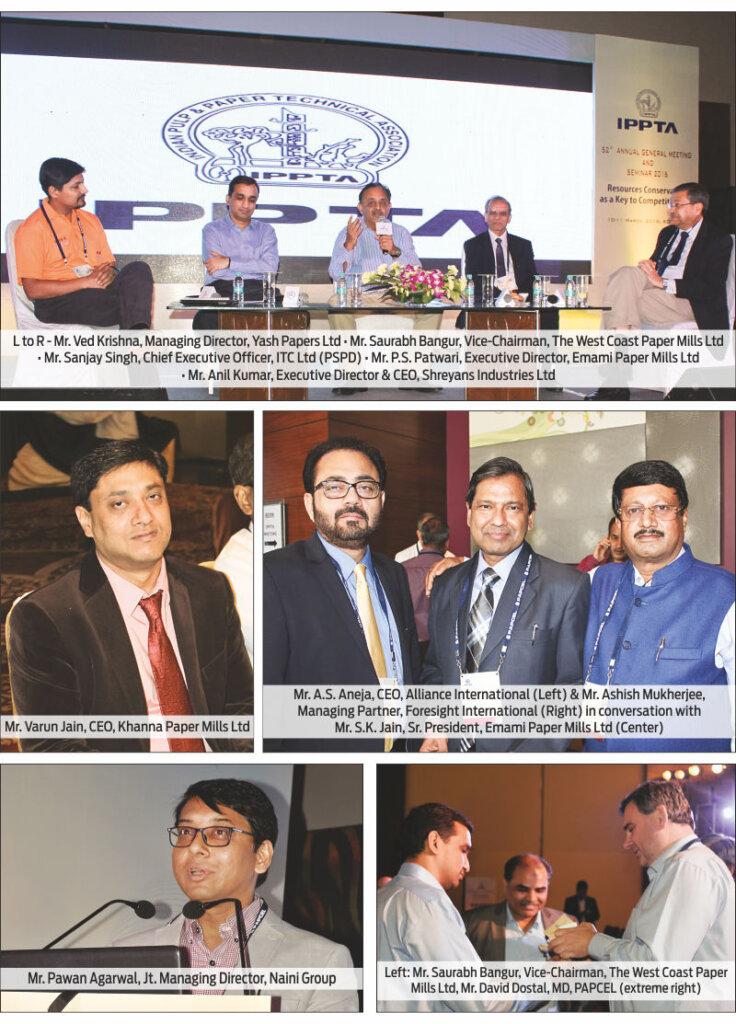There was a sound of earnestness at this edition of IPPTA’s seminar when it chose the theme of resources conservation and saw it as a road leading to cost competiveness and sustainability.
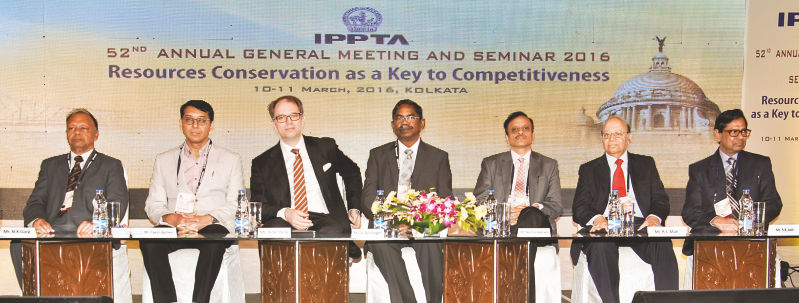
The 52nd Annual General Meeting and Seminar of IPPTA were held on March 10 & 11, 2016 at Kolkata with a pressing and quite contemporary theme ‘Resource Conservation as a Key to Competitiveness’. Both resource conservation and competitiveness have been crucially contemplated by the Indian paper industry for quite some time. The event was well attended and each session witnessed full house proving that IPPTA was now able to draw notice to such globally significant issues for industries.
The event commenced with light lighting ceremony by the Chief Guest Mr. Thiru A. Velliangiri, Dy. MD & CFO, TNPL. The keynote speaker Mr. Peter Berg, Director of Knowledge, Mckinsey & Company, Sweden delivered his address outlining some high—priority steps to address the challenges in resource conservation.
The seminar comprised one panel discussion and five technical sessions spread over two days and all concerning the issue of resource productivity in one way or the other. The technical sessions took in its ambit subjects such as innovations to save fiber; tools such as shoe press to save raw material and energy; resource conservation in pulping; dynamic simulation of paper machines; improved energy & recovery in straw based pulping; water conservation mechanism in SPB; etc. From a glance taken over the subjects, it’s clear that IPPTA chose the theme in quite earnest, not just for the name sake. Still other sessions took over subjects like reduced production cost, steam efficiency and solar energy in paper industry, which again are emphasizing the main theme.
The event also saw the launching of all new IPPTA facebook page and the unveiling of IPPTA’s journal in a new avatar.
.
Overwhelming Response
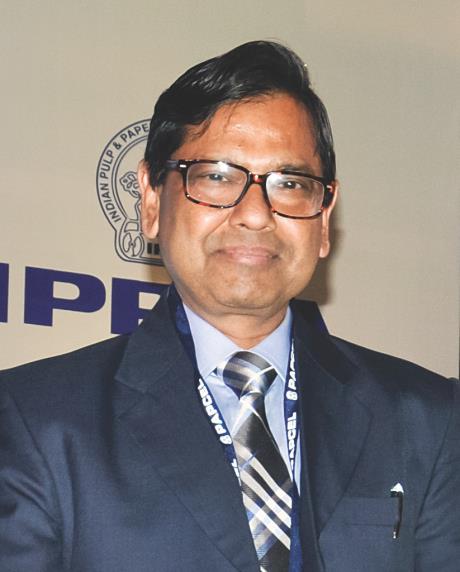
Mr. S. K. Jain, Chairman, Program Committee, IPPTA while delivering welcome address said, “It’s an honor to host this prestigious event at Kolkata because of the city’s historical and pioneering significance in the realm of papermaking.
“We have got an overwhelming response for this edition of IPPTA’s AGM & Seminar with over 350 registered delegates attending the event. This kind of response speak itself for the growing standards of IPPTA which lately has witnessed tremendous value addition in terms of quality of technical papers presented and issues raised for discussions.
“Presently, the Indian paper industry passing through rough times due to various reasons and challenges such as reduced paper consumption globally leading to imports and dumping in India, scarcity of fibrous raw material, shortage of water, high cost of energy, and, of course, the scarcity of right kind of manpower.
“These all resources are vitally required for the sustainable operation of the industry. The conservation of these resources and optimizing their utilization are the key to remain in the business. IPPTA has chosen the theme ‘Resource Conservation as a Key to Competitiveness’ keeping above exigencies in mind.
“Today’s seminar is highly relevant as the papers being presented may truly show the path forward and may offer a solution to a situation where margins are very thin and prices are under pressure.”
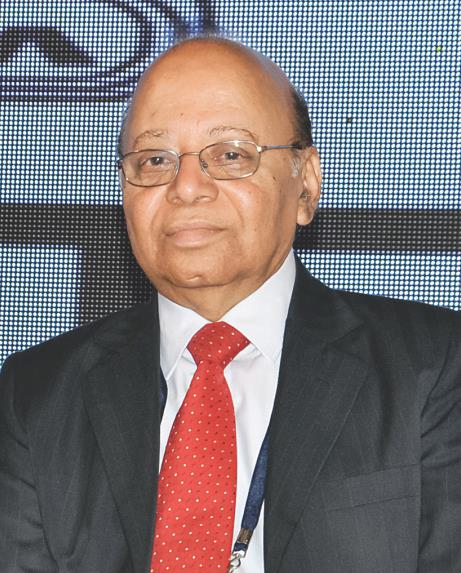
Giving a technical overview of the seminar, Mr. R. C. Mall, Chairman, Technical Committee, IPPTA duly explained the timeliness of the theme and said, “It was considered to be not only the need of the hour compelled by global and domestic competitiveness, but also the necessity arising out of society’s demand to preserve resources endowed by the nature for future generations – it’s a moral responsibility of the industry; any industry, I would say.
“After a lot filtering down, we selected 17 out of 25 papers and created four different subject categories under which these papers would be presented. This year we have become a kind of ‘chooser’ instead of being a ‘seeker’ as compared to previous editions in terms of the number of quality technical papers available for us to choose from them. Role of the technical committee has since been realized to be too important with such a special task.
“Resource conservation in any field is very important to achieve competitive cost advantage. When sea freights have come down rendering distances of no consequences, length and breadth of globe shrinking with e-platforms offering multiple choices and check on availability can be easily experienced through a click of mouse. Survival of business in such a scenario depends only on high quality and competitive price. The seminar thus holds a big relevance in current times.”
.
Economy Picking up
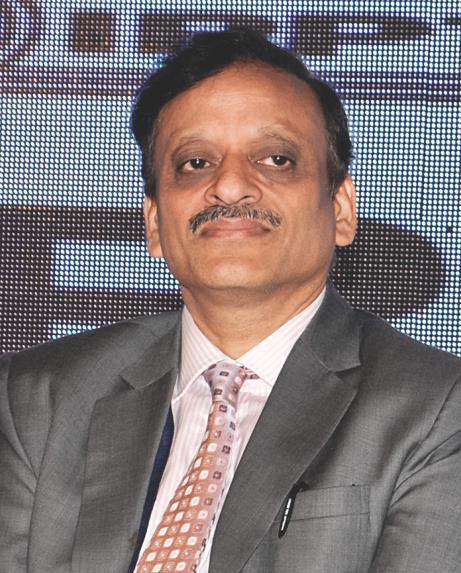
Mr. Neehar Agarwal, President, IPPTA in his presidential address said, “As we all know that the Indian paper industry is very closely linked to the Indian economy. As the economy or GDP improves, the general prosperity level of the industry will improve, and thus the industry would see its better days. As of now, the general perception about the economy is somewhat negative. However, if we observe some of the macroeconomic indicators, there are some silver linings too.
“The Indian economy picked up in the second quarter ended September 2015 and grew at 7.4 per cent during the quarter on the back of strong growth in manufacturing, trade, hotels, and transport & communication services. This shows that economy is picking up pace in a time when, in contrast, the International Monetary Fund is slashing its global economic growth forecast for 2016 on as it expects a number of factors to weigh on world economies. Moreover, GDP has been seen sliding down in most the emerging economies except us and our growth rate is now ahead of China.
“In terms of inflation, CPI in India increased 5.18 percent year-on-year in February of 2016, lower than 5.69 percent in January, and WPI is negative. India’s current account deficit is likely to narrow more in fiscal 2016 from 1.3 per cent in 2015. The total FDI inflows soared by 24.5 per cent to USD 44.9 billion during 2015, as compared to USD 36.0 billion in 2014. All these figures are a reason to cheer about. There is good time ahead and the paper industry is bound to grow from its present sluggishness.”
Mr. Agarwal, however, also talked of steep road ahead for the paper industry in the form of incessant challenges, he said, “Falling crude prices, of course, is good in terms of lowering down the manufacturing cost. However, on the flip side, the decrease in crude prices has also resulted in falling down freight rates making easy the imports or dumping of paper from overseas. This is a challenge.
“Besides, increasing raw material cost, scarcity of water, prohibitive capital cost, and stringent environmental norms form the usual set of challenges to be taken seriously by the industry. Because of all these, barriers to return seem too high to scale nowadays.
Addressing these issues is urgent and answer lies in the theme of the seminar. The industry has to become more and more cost competitive and flexible to be sustainable. Apart from improving processes, technologies, and equipments, we need to first correct our basics. There are many little things or step which the industry needs to implement for the resource conservation before taking major steps.
“Moreover, during last couple of years, there have been several policy changes which are going to affect the paper industry in a substantial way. On the environment front, there is Ganga River Basin norms which has lately become more stringent on the front of water consumption amount, COD, BOD, etc. There is also now a norm introduced about color.
“Perform, Achieve and Trade (PAT) scheme’s first cycle is already over. PAT is a market based mechanism to enhance cost effectiveness of improvements in energy efficiency in energy intensive large industries and facilities, through certification on energy savings that could be traded. I am happy to say that most of the mills have been able to meet the PAT targets. Now, the second cycle is about to come in and the industry should gear itself towards more energy conservation to successfully meet the target.”
.
Essentiality of Resource Productivity
“The increasing size of global population puts a lot of stress on requirement of how we use our resources and it has been estimated that we need to at least double the rate of productivity improvement globally for resources like energy, water, etc”

Mr. Peter Berg, the keynote speaker, has comprehensive understanding of issues such as climate change, bio-energy, and bio-fuels connected to the forest products industry. He said, “Resource conservation, which I preferably term as resource productivity, is essential for the pulp and paper industry for three key reasons. First, for a basic material industry like pulp and paper, resource productivity is the key source of cost competitiveness as other speakers have already spoken about. Second, a good view of the resources opens up many other business opportunities. Third, more broadly, we have an obligation, whether moral or legal, to be aware towards earth’s limited resources – something which consumers, companies and governments are increasingly becoming aware of.
“On the cost competitiveness side, India has some inherent disadvantages, for example, on the fiber side. Virgin fiber, which is situated only in pocketful of natural region on the globe, has always been scarce in India. Also, in terms of recycled fiber, paper recovery rate is a scanty 30 percent. So, that makes India very much dependent upon imported recycled fiber. In fact, imports of raw material are one of the key reasons for reduced cost competiveness.
“The second reason why resource productivity is important is that it opens up many new business opportunities. For example, wood or other lignocelluloses, like bamboo and other agricultural products, have many other interesting components like hemicelluloses, lignin, etc. We have traditional burning of these all these products, hopefully making very productive use as energy. However, that may not be the best use of those products. There is a whole new industry being built up that maximizes the extraction of value from fiber resources for sustainable products. A paper company should assess whether that kind of development is the right path for them.
“This kind of development puts the pulp and paper industry in a unique position to expand its resource productivity beyond its own borders. To cite this, I have taken an example from the packaging industry where a tiny little layer of aluminum in a juice packet stands roughly 50 percent on the total CO2 footprint of the packaging industry. What the paper industry can do, which is being tested right now, is to develop other kind of barriers, for example, hemi-cellulose based barriers to replace aluminum to avoid emission of CO2 and also to make packaging much more easy to recycle. Other examples could be using other smart fiber based packaging solutions that would help consumable companies or retailers to reduce their transportation cost, or that would help avoid the agricultural waste in the supply chain.
“Resource productivity is increasingly becoming a license to operate our businesses. The global population is increasing and I think, by 2045, there will be 9 billion people in the world. The increasing size of global population puts a lot of stress on requirement of how we use our resources and it has been estimated that we need to at least double the rate of productivity improvement globally for resources like energy, water, etc.”
.
Apt Theme of the Seminar
“Today, even when the growth is hardly 4 percent in paper and 12 percent in case of packaging board, we need to create an additional capacity of 200,000 tonnes of board and 200,000 tonnes of paper per annum”
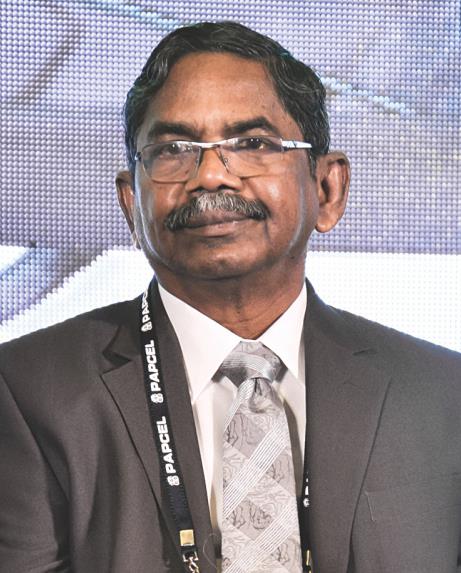
The Chief Guest Mr. Thiru A. Velliangiri endorsed the theme of the seminar and said, “I am happy to know that IPPTA has chosen the theme ‘Resource Conservation as a Key to Competitiveness’ for this seminar and has selected the topics which suit the current as well as the urgent requirement of the industry.
“As a person associated with the paper industry, I strongly believe that the future of the paper industry is safe. Under the current Indian demographics, those aged 15 to 29 in the national youth policy (2014) constitutes 27.5 percent of India’s population and those below the age 15 are 29 percent. I think these two age groups contribute largely to the demand for paper in the education sector.
“Also, with the continuous increase in literacy level and appreciable economic growth happening in the country, there is a good potential for the paper industry to grow on a consistent basis compared to the rest of the world.
“Today, even when the growth is hardly 4 percent in paper and 12 percent in case of packaging board, we need to create an additional capacity of 200,000 tonnes of board and 200,000 tonnes of paper per annum. Otherwise, there will be mismatch between the demand and supply and we may have to look for imports for paper and packaging boards sooner or later.
“While there is good potential for growth for the Indian paper industry, we have to recognize the inherent setbacks and new challenges being faced by the industry which acts as the deterrent to the growth.
“Inherent setbacks include fragmented industry structure. We have numerous small mills with obsolete technology with a little or no scope for modernization and consolidation. Shortage of fiber like basic raw material pulp wood; high energy loss, both coal and electricity; numerous sizes of paper with no standardization; uneven demand leading to accumulation of stock at least 6-7 months a year – all these factors lead to poor return on investment and make the industry less attractive for fresh investments. I think this is one reason why new investment in the paper industry is much less as compared to the potential it has.
“New challenges include the increasing imports from large capacity paper mill from neighboring countries under FTA with zero duty, severe regulations on environment front demanding immediate investment with no immediate returns, and so on – these are deterrent to the growth of the industry.
“If you look at the paper industry in last 2-3 years in terms of cost structure, raw material, power and fuels, chemicals, etc. account for 70-75 percent of total revenue. Besides, the industry has to meet the expenditure such as wages and salaries, maintenance, overheads, financial charges and depreciation from the remaining 25-30 percent, and then look for profit, which is either meager or many times negative.
“We have to look for means to restrict the expenditure in raw material, chemicals, power and fuel, etc. to 65 percent. Then only will we able to make a decent return on our investments. With the poor return on investment, mills are unable to take up modernization and expansion. Trying to reduce the inefficiencies, which leads to higher costs and negative or paltry returns, must be pursued earnestly in order to break free from the vicious circle of inefficiency and higher cost.
“In the free economy, where prices are determined by the market, corporate fortune depends heavily on operational performance. Inefficient consumption of resources will hamper the fundamental economic, social, and environmental systems. Unless good savings are made in specific consumption of all inputs, it would be difficult for the mills to generate funds modernization and expansion.
“At TNPL, we have become extremely conscious of conservation practices and improving our operational efficiencies. I have few examples to cite here to elucidate our commitment to move towards higher resource productivity. First, I would like to mention the generation of biogas methane from bagasse waste water. All of you know that 1 cubic meter of biogas methane saves 0.60 liters of furnace oil. Since 2004-2005, almost for last 11 years, we have been generating about 25,000 cubic meter of methane from bagasse waste water every day and saving 15 KL of furnace oil every day. This gives us the best competiveness and helps us to reduce our cost.
“On the front of water conservation, TNPL has taken measures like recycling of paper machine effluents to the tune of 9000 cubic meter per day in the bagasse storage and fiber preparation, recycling of about 1800 cubic meter of EOP alkaline filtrate in pulp mills, recycling of pump water, etc. The intermediation of such measures has reduced the water consumption to the present level of 45 cubic meters per tonne of paper production.
“By reducing the FPAT (first pass ash retention) by 10 percent, the consumption of fillers was reduced by 16 kg/tonne of paper leading to the conservation of about 6000 tonnes of fillers per annum.
“For lime sludge and waste management, TNPL is now converting its entire lime sludge and fly ash into high grade cement. TNPL has installed a 600 tpd integrated cement plant for the purpose.
“Under farm forestry, we have implemented farm forestry in 100,000 acres of land with the help of 22000 farmers and are adding about 15000 acres every year to be continued indefinitely. All these measures are good for environment and the company.
